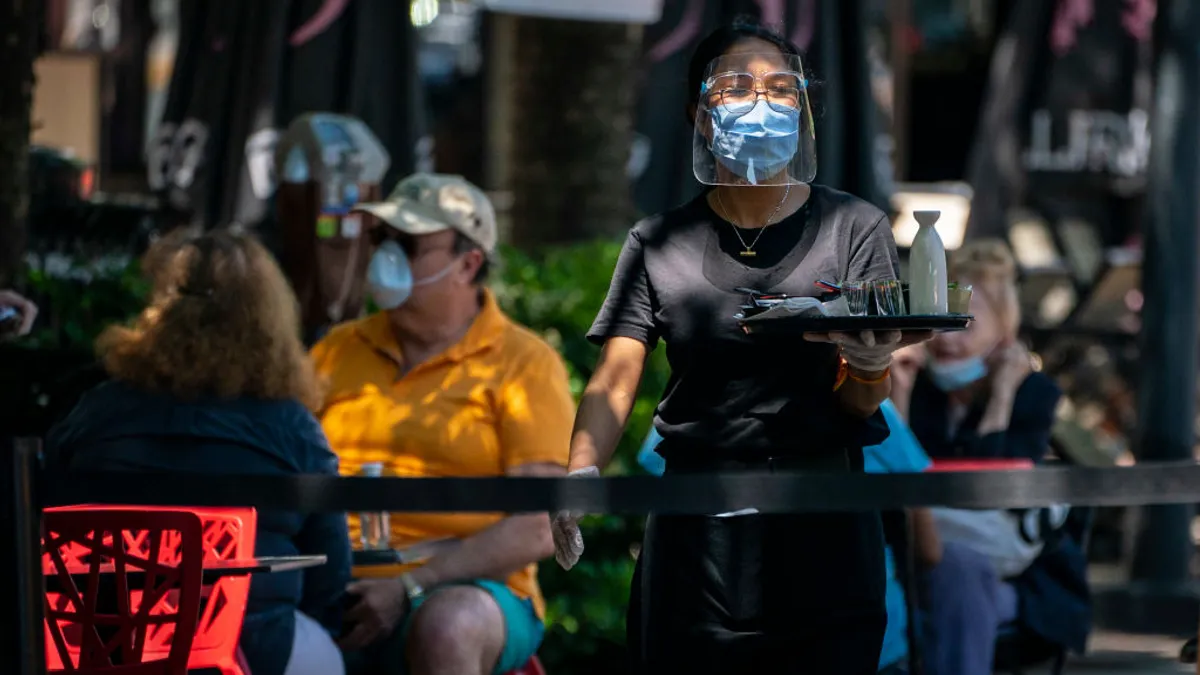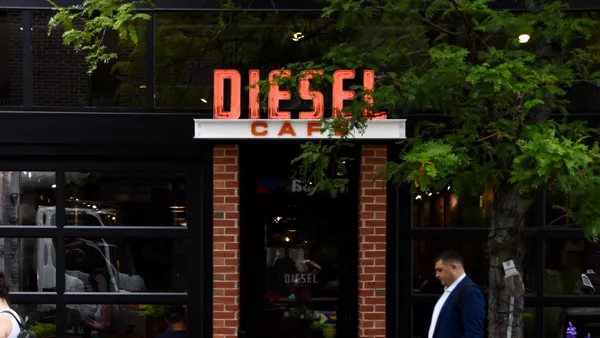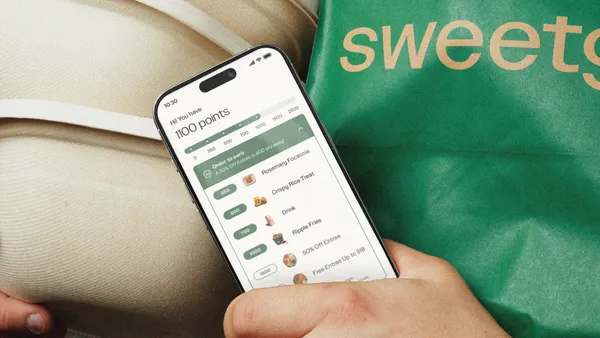Dive Brief:
- New research from The NPD Group finds that U.S. restaurant industry traffic is down 4% compared to pre-pandemic levels in the year ending December 2019 but is expected to recover 98% of its orders by the end of this year.
- The industry ended 2021 with a 9% year-over-year increase in online and physical visits, despite several challenges such as the omicron variant, labor shortages and rising food and other operational costs.
- The full-service segment continues to lag behind quick-service restaurants in terms of traffic recovery. The NPD Group reports QSRs increased traffic by 7% versus 2020 and the segment is down just 1% versus December 2019. Full-service traffic grew by 18% last year but remains 16% below December 2019 traffic levels.
Dive Insight:
At this point in the pandemic, there seems to be a tale of two recoveries in the restaurant industry. The NPD Group reports major chains grew visits by 7% in 2021 versus the same period a year prior, which is a 2% decline compared to the year ending December 2019. Comparatively, independents and small chains, while up double digits in visits compared to 2020, remain down by 9% versus 2019.
Major chains have been able to adjust operations and shift to off-premise channels more quickly than their independent peers, which better insulated the bigger concepts during the initial shutdowns of 2020, as well as the subsequent delta and omicron variants.
Those well-capitalized chains are also better able to endure inflationary pressures, including higher labor and food costs, that have grown throughout 2021. Last year, inflation reached its highest level since 1982 and consumer prices rose 7%. Despite these challenges, McDonald’s franchisees reached record average cash flows in Q4.
Conversely, 58% of small businesses experienced a sales decrease by more than half in December due to concerns about the omicron variant, according to the Independent Restaurant Coalition.
According to Alignable, only 14% of independent restaurants say they have fully recovered, down from 32% in December. This decrease is due both to the omicron variant — 53% of U.S. small businesses said the variant has hurt their recovery — and inflation, which is small operators’ biggest concern. Thirty-nine percent of restaurants were unable to pay rent in January, which is up 5% from December.
While traffic is growing in a positive direction, recovery remains distant for many restaurants. The Independent Restaurant Coalition and the National Restaurant Association are both calling on Congress to refill the Restaurant Revitalization Fund. A recent survey from the NRA found that nearly 50% of restaurants that didn’t receive RRF grants believe it’s unlikely they will outlast the pandemic without further relief. Congress has not passed a refill, and may never if omicron cases continue to decline.
Despite a fall in COVID-19 cases, consumers are still weary about returning to dine-in, according to Morning Consult. Just 43% plan to celebrate Valentine’s Day at a restaurant. This is compared to 69% who said the same pre-pandemic.
Many of those consumers are likely to turn to off-premise orders instead. NPD found that restaurant delivery has grown by triple digits since 2019, including a 17% increase in delivery in 2021 and an 89% gain in 2020. Delivery now represents 11% of off-premise business. Drive-thru visits are up by 4% year-over-year and hold the largest share at 52% overall, while carryout represents 37% of off-premise orders with a 2% growth in 2021.
Those off-premise sales do not fully make up for lost dine-in traffic at concepts without robust off-premise channels. Industry-wide recovery may remain uneven until traffic levels out across segments.
In a statement, NPD food industry advisor David Portalatin said the industry’s recovery is not going to be a straight line moving upward, but warned, “It’s going to be bumpy.”













